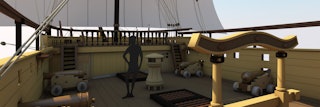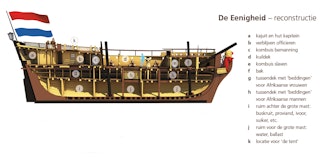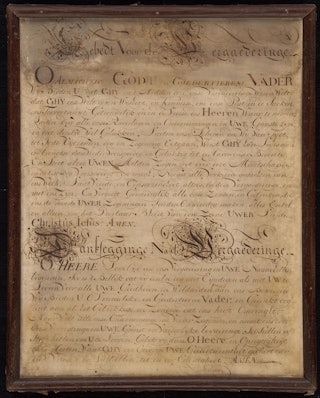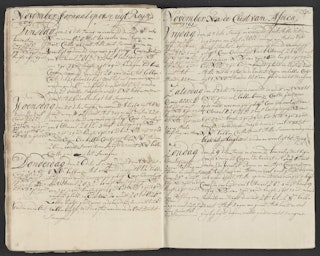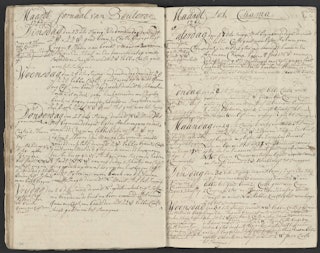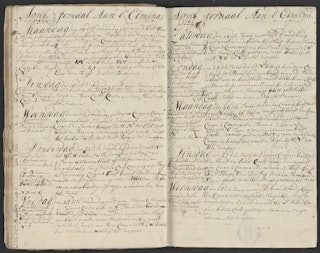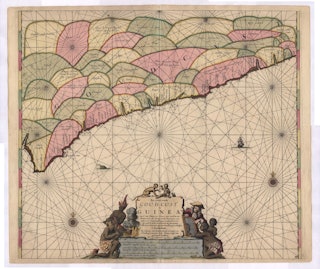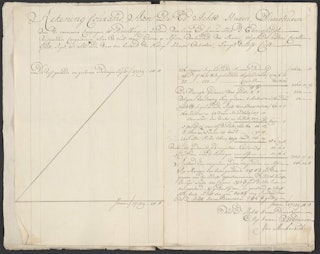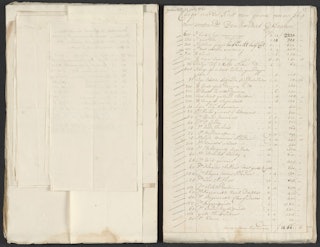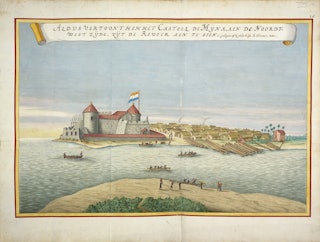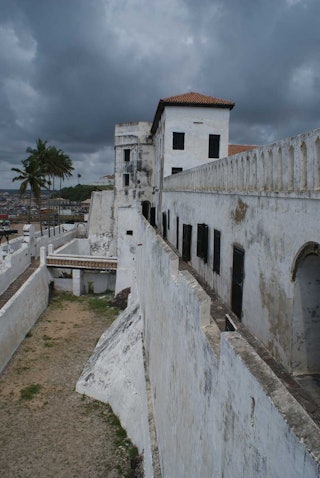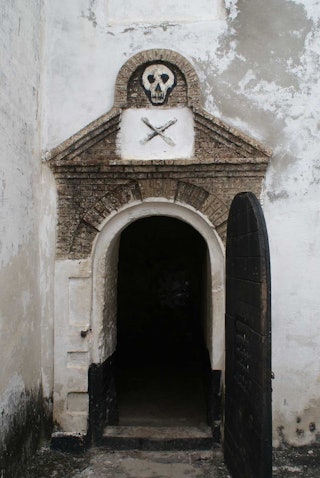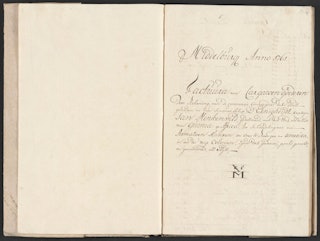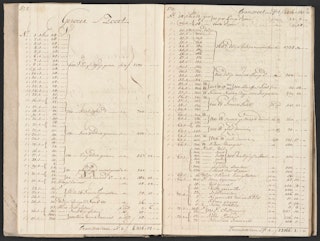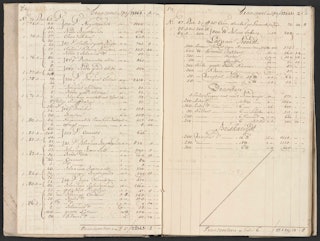3.1 Aboard
Introduction
Life on board was very structured. There was enough work to be done, such as cleaning, making repairs and keeping watch. Once the crew boarded the ship they were divided into watches. Almost every watch lasted four hours. The duration of the watch was measured by an hourglass, or glass. Each glass lasted half an hour. After each half hour the hourglass was turned over while simultaneously ringing the ships bell so all members of the crew knew half an hour had passed.
Documents
Werkbladen
- Introduction Lesson 3.1 Conditions on board
- Lesson 3.1 Circumstances on board – Math
- Lesson 3.1 Circumstances on board – Language
- Lesson 3.1 Circumstances on board – WO
Extra
Viewing assignment – film (internet)
Warning: Some images shown can be experienced as shocking.

The Klokhuis episode De slavernij junior : Slaven (Slavery Junior: Slaves); Episode 1. 21:12 min
Dutch spoken, subtitles available in various languages. Click ‘subtitles’ in the bottom right-hand corner and move the arrow to ‘Translate subtitles’. Select a language and click OK.
www.hetklokhuis.nlThis short film is about the history of the triangle trade. Ships sailed with trade goods from the Netherlands to Africa to purchase slaves, gold and ivory (a barter system). Goods and enslaved Africans were shipped across the Atlantic Ocean to the West Indies (South- and North America and the Caribbean). There the Africans were sold as slaves to work the plantations. The ships departed from there to the Netherlands with their return cargo, mostly sugar, cacao, coffee and tobacco. The three boys in the film explore the history of slave trade. They ask experts questions and one of the boys has research done to learn from what country his ancestors originated.
Watch the episode about slave trade and the make the assignment.
Assignment:
- Discuss the film in class. What did you think of this episode? Did it give you an idea of how slave trade was organized? What image or scenes stayed with you the most and why? Take notes on what you discussed.
- The boys in the film ask questions to various people. In small groups of four or five students, make a list of questions about slave trade that you would like to ask the experts listed below:
- A historian who has researched slave trade.
- The director of a museum with objects used for slave trade in the collection or for instance housed in a building or fort that was used for slave trade.
- An archivist who maintains archives on slave trade and genealogical research.
- An archeologist who has done excavations and research on slave trade.
- A representative of a group, association or foundation dealing with the legacy of slavery.
- If possible, the teacher can invite one or more experts to class so the students can ask questions. Perhaps you can also ask questions by e-mail or phone, or visit the institute where the expert works. See for ideas the lesson suggestions.
- Process the questions and answers in a paper, in which you incorporate a short report about the film and your notes from the first assignment.
3.2 Western Africa
Introduction
The Unity’s voyage from Zeeland to Western Africa lasted well over two months. First The Unity sailed to the Windward or Upper Coast, then to the Ivory Coast and finally to the Gold Coast. The captain and first mate traded as much cargo for slaves, water and rice as possible. Per trade location the demand for goods and the supply enslaved Africans varied. Men were more expensive than women and boys were more expensive than girls. Gold and ivory were bought in addition to slaves.
Documents
Worksheets
- Introduction Lesson 3.2 Western Africa
- Lesson 3.2 Western Africa – Math
- Lesson 3.2 Western Africa – Language
- Lesson 3.2 Western Africa – WO
Extra
Discussion about then and now
You can find instructions about conducting a discussion in the worksheet information.
Topics that may provide an opening for a discussion about slavery
Then:
In all parts of the world there was slavery: in America, Asia, Europe and in Africa. It was deemed normal. Soldiers who lost a war were killed or enslaved. This also often happened to their women and children. A person could also be forced into slavery when a debt could not be paid. Poor parents sold one or more of their children into slavery. Criminals were sometimes also sentenced into slavery.
In colonial times and during the time of trans-Atlantic slave trade, Europeans bought slaves from African traders. Cargo ships shipped the enslaved Africans to the other side of the Atlantic Ocean. The Africans who survived the passage were sold with a profit to the owners of the plantations in the America’s. There they were forced to work as slaves on the plantages.
- What do you think about one human being as the owner of another human being?
- In the past people though of many reasons to justify slavery: a different skin color, a different language, culture, religion, or no education. In fact they thought other humans were less civilized and not fully human, but that they were something between human and animal. Which is why the Europeans and American often treated the African slaves as animals. What do you think of this? Is this way of thinking about other humans still present today?
- In the past, if you were born into slavery, specifically if both your parents were enslaved, the law determined that you too were a slave and property of the slave owner. What do you think of such a law?
Now:
Slavery is illegal nowadays. Slavery is considered a crime against humanity. This does not imply there is no more slavery. Millions or child slaves are used for slave labor in factories, in underground mines, on the land, in prostitution, in drug trafficking and are used as child soldiers. In 1989 the United Nations drafted the Convention on the Rights of the Child. In this attention was paid to modern forms of slavery, such as child slavery. An international organization dedicated to the protection of children’s rights is Unicef.
- Have you ever thought about slavery? What do you think of the fact that slavery still exists today?
- Can you compare colonial slavery, during the time of the trans-Atlantic slave trade, to slavery now? Why can you / can’t you?
- What do you think of organizations that try to place attention on the existence of modern slavery, such as Anti-Slavery International, which was founded in 1839, and is the world’s oldest international human rights organization and works to eliminate all forms of slavery around the world. Anti-Slavery International also has a Facebook page. Would you like a page such as theirs and actively join such an initiative?
- Do you have any ideas on what you can do to stand up against child slavery? And what could you do with your group/class or the whole school?
More information and questions about the discussion topic Slavery
More information
Dutch Canon of National History – Slavery (in Dutch)
